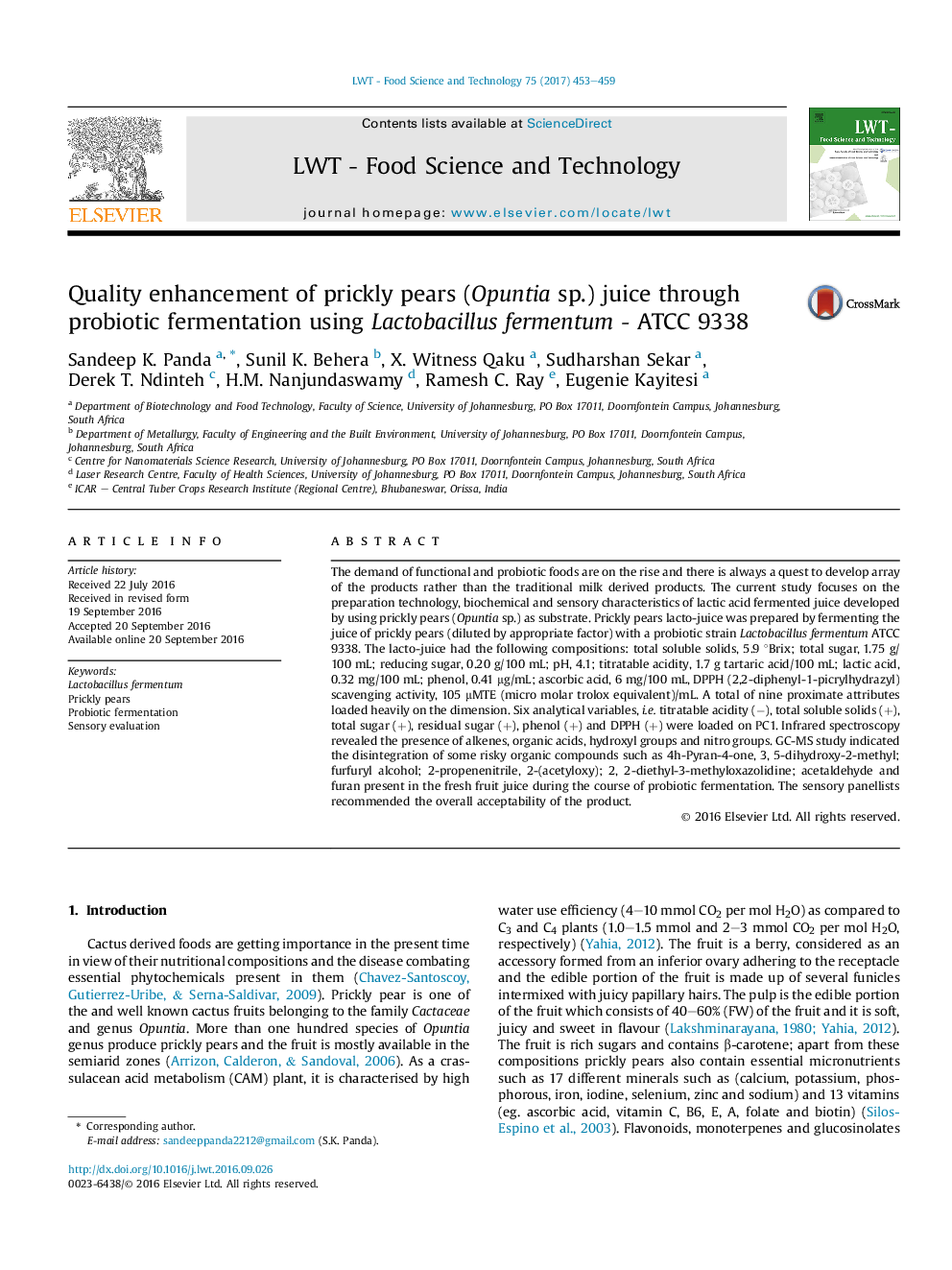| Article ID | Journal | Published Year | Pages | File Type |
|---|---|---|---|---|
| 6400237 | LWT - Food Science and Technology | 2017 | 7 Pages |
â¢The study demonstrates the value addition of prickly pears.â¢GC-MS study indicated the disintegration of some risky organic compounds.â¢The product is well accepted by the consumers.
The demand of functional and probiotic foods are on the rise and there is always a quest to develop array of the products rather than the traditional milk derived products. The current study focuses on the preparation technology, biochemical and sensory characteristics of lactic acid fermented juice developed by using prickly pears (Opuntia sp.) as substrate. Prickly pears lacto-juice was prepared by fermenting the juice of prickly pears (diluted by appropriate factor) with a probiotic strain Lactobacillus fermentum ATCC 9338. The lacto-juice had the following compositions: total soluble solids, 5.9 °Brix; total sugar, 1.75 g/100 mL; reducing sugar, 0.20 g/100 mL; pH, 4.1; titratable acidity, 1.7 g tartaric acid/100 mL; lactic acid, 0.32 mg/100 mL; phenol, 0.41 μg/mL; ascorbic acid, 6 mg/100 mL, DPPH (2,2-diphenyl-1-picrylhydrazyl) scavenging activity, 105 μMTE (micro molar trolox equivalent)/mL. A total of nine proximate attributes loaded heavily on the dimension. Six analytical variables, i.e. titratable acidity (â), total soluble solids (+), total sugar (+), residual sugar (+), phenol (+) and DPPH (+) were loaded on PC1. Infrared spectroscopy revealed the presence of alkenes, organic acids, hydroxyl groups and nitro groups. GC-MS study indicated the disintegration of some risky organic compounds such as 4h-Pyran-4-one, 3, 5-dihydroxy-2-methyl; furfuryl alcohol; 2-propenenitrile, 2-(acetyloxy); 2, 2-diethyl-3-methyloxazolidine; acetaldehyde and furan present in the fresh fruit juice during the course of probiotic fermentation. The sensory panellists recommended the overall acceptability of the product.
